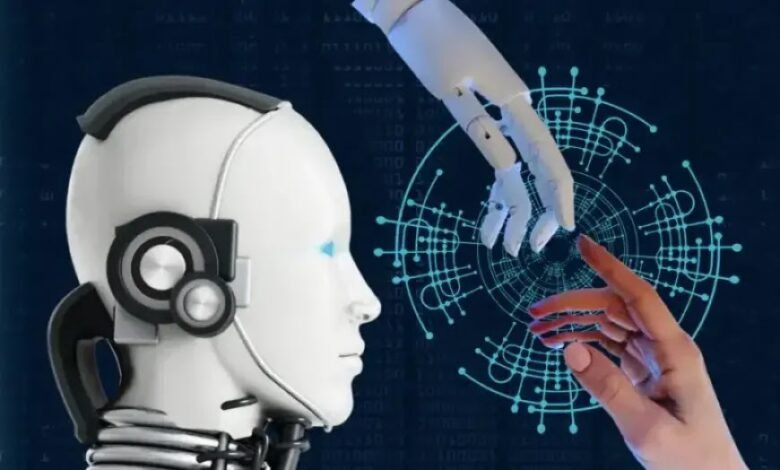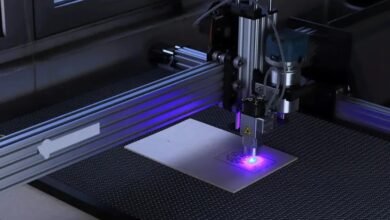Robots: will reflect changes in the world

Nowadays, robots are increasingly becoming a staple of society and are beginning to replace human jobs in a number of industries.
This article will explore the full reasons behind the robotics revolution and why it will change the world.
The first reason for the robotics revolution is the lower cost of workers. As they become more advanced, they are able to do more tasks previously done by human workers. This decrease in labor costs is pushing companies to automate more processes and replace human workers with robots.
The second reason is the increasing accuracy of robots. Robotic technology has advanced to the point that they are now capable of completing tasks with a high degree of accuracy. This accuracy is important for companies because it can lead to fewer errors and lower costs.
As companies automate more processes and replace human workers with robots, the world is changing. This change results in a more efficient and accurate world.
Robotics is a rapidly growing industry
Robotics is a rapidly growing industry with huge potential. According to a report by MarketsandMarkets, its market globally is expected to reach $15.87 billion by 2023, with a compound annual growth rate (CAGR) of 26.3%. The industry is driven by a number of factors, including the increasing demand for automation across various industries, falling costs and components, and the increasing availability of artificial intelligence (AI) and machine learning technologies.
One of the main reasons for the rapid growth of the robotics industry is the increasing demand for automation. In many industries, there is a growing need to perform repetitive tasks quickly and reliably, and we are able to provide that. For example, in the automotive industry, they are increasingly used for assembling cars. This is because they can work faster and more accurately than humans, and they do not get tired. This is just one example of how they are being used more and more in industries that require speed and reliability.
In addition to the growing demand for automation, another major factor driving the growth of the robotics industry is the declining cost of its components. This makes it accessible to a wide range of businesses and industries. For example, small businesses that were previously unable to afford to automate their operations are now able to do so. This opens new opportunities for businesses of all sizes to increase their productivity and efficiency.
The increasing availability of artificial intelligence and machine learning technologies is also playing a role in the growth of its industry. These technologies give robots the ability to learn and adapt, making them more versatile and useful. For example, they are now used in healthcare to help with tasks such as dispensing medications and providing support to patients.
This is just one example of how artificial intelligence and machine learning are being used to make them more capable and useful. The robotics industry is growing rapidly and is driven by a number of factors. This industry has huge potential and is set to change the world in many ways.
Robots offer many advantages to both businesses and consumers
Today, businesses and consumers alike are looking for ways to increase efficiency and productivity, while also reducing costs. Robots offer many advantages to both.
One of the main advantages of robots is that they can help automate tasks. This can increase productivity as well as reduce costs for companies, as they can perform tasks at a lower cost and more quickly than humans. For consumers, robots can provide benefits such as improved product quality and faster delivery times.
Their other advantages are that they can help improve safety. For companies, this means fewer workplace accidents. For consumers, products are less likely to break or malfunction.
Robots can also help improve the environment. For companies, that is, reducing energy consumption and waste production. For consumers, with more environmentally friendly products.
Robots are changing the way we interact with technology
Robots are changing the way we interact with technology. We are now able to create robots that can interact with us and our environment in ways that were previously impossible. This allows us to create new and innovative ways to interact with technology and create new experiences for people.
In the past, our interaction with technology was limited to the input we provided through keyboards, mice, and other input devices. Now, with robots, we are able to interact with technology in a more natural way. We can now use our voices, gestures, and even our thoughts to control technology. This opens up a whole new world of possibilities for how we interact with technology.
Robots are also changing the way we interact with our environment. We can now create robots that can clean our homes, do laundry, and even cook our food. This allows us to save time for other activities, and enjoy our lives more.
It is changing the way we interact with technology, and this is just the beginning. We are only limited by our imaginations when it comes to the possibilities of what we can do with robots. As we continue to develop this technology, we will be able to create even more amazing experiences.
Robots improve our quality of life
Robotics is often viewed from the perspective of the industrial and manufacturing world. However, robots are also changing our quality of life in many ways. One way robots do this is by making the tasks we do every day more efficient. For example, there are now robot vacuum cleaners that can clean floors for you. There is also a robot mop that can clean floors and even walls. These types are becoming increasingly affordable and are making our lives easier by taking on tedious tasks that we don’t want to do.
In addition to making our daily lives easier, they also improve our health. There are now robot assistants that can help elderly or disabled people with their daily tasks. There are also robotic exoskeletons that can help paralyzed people walk again. These types of assistive robots provide people with a better quality of life by helping them live independently.
It is also changing the way we interact with the world. There are now robots that can be used to explore dangerous environments. There are also robots that can be used for underwater exploration. These types of robots give us new ways to interact with our world and open up new possibilities for exploration. They are changing our quality of life in many ways. They make our daily lives easier, they improve our health, and they change the way we interact with our world.
Robots provide new employment opportunities
Robots are creating new employment opportunities, not only in advanced manufacturing but in a wide range of other industries as well. Their low cost and increasing sophistication are driving their adoption in many different sectors.
In the healthcare industry, for example, it is also used in surgery, rehabilitation, and caregiving. They are also used in the food and beverage industry, for tasks such as filling and packaging. In the retail sector, ATM machines are becoming increasingly common. In the service industry, robots are used for tasks such as cleaning and security.
However, it is important to note that deploying robots is not just about saving costs. It is also about creating new job opportunities. For example, the healthcare industry is expected to create millions of new jobs in the next decade, as baby boomers age and the need for health services increases. Its deployment in the healthcare industry will help meet this growing demand.
Likewise, the food and beverage industry is expected to create millions of new jobs in the next decade, as the world’s population grows and demand for food increases. The deployment of robots in the food and beverage industry will help meet this growing demand.
The adoption of robotics creates new employment opportunities in a wide range of industries. It’s not just about saving costs, it’s about meeting the needs of a growing population and creating new jobs.
Transforming manufacturing and other industries
In today’s day and age, it is difficult to go anywhere without encountering some form of automation or robots. Even something as simple as an ATM is a form of automation. In factories and other workplaces, robots are becoming more widespread. They are able to do things faster and more accurately than humans, and they do not get tired. This caused a revolution in manufacturing and other industries, as well as the way products were manufactured.
The use of robots in manufacturing is not a new concept. In fact, the auto industry has been using robots to build cars for years. However, its use is becoming more widespread in other industries as well. For example, in the food industry, they are used to package products. In the medical industry, I also assist in surgical procedures. In the construction industry, they are used for welding and painting buildings. The benefits of using robots in these industries are many, and they are:
- More accurate than humans. They can repeat the same task over and over without getting tired or making mistakes.
- It can produce more products in a shorter period of time.
- Can operate in hazardous or difficult environments. For example, they could go into a burning building to put out a fire, or they could work in radioactive areas to clean up nuclear accidents.
There are some disadvantages to using them as well:
- It’s expensive.
- They can cause people to lose their jobs.
- They can be dangerous if not programmed or supervised properly.
Despite these disadvantages, their use is increasing in many industries. This is because the benefits of using them outweigh the disadvantages. As the use of robots increases, we will see a shift in the way products are manufactured.
Bright future
There can be little doubt that robots are here to stay and are likely to become increasingly common in society. While there are those who worry about its evolving implications and artificial intelligence, it seems clear that its future is indisputably bright.
One area where robots are likely to have a major impact is healthcare. They are already used in hospitals for tasks such as dispensing medications and taking blood samples. They can also be used to assist surgeons in performing complex operations. This is likely to become increasingly common as they become more sophisticated and able to perform more tasks.
Another area in which it is likely to have an impact is manufacturing. Robots are already being used in many factories and are likely to increase as they become more advanced. They can perform tasks such as welding and painting with a high degree of accuracy and speed. This can lead to increased productivity and efficiency in factories.
It is also likely to have an impact on transportation. Self-driving cars are already being developed and are likely to become increasingly common in the future. This can reduce traffic accidents and also save people’s time.
It is likely to have a significant impact on many different areas of society and will achieve many benefits. There is no reason to believe that it will not continue to develop and become increasingly popular.
It already has a huge impact on the world and will become even more important in the future. With the ability to automate tasks, robots have the potential to significantly improve efficiency and productivity in many industries. They also have the ability to provide care and assistance to humans, which will become increasingly important as the population ages. In addition, it provides the possibility of exploration and research in difficult or dangerous environments. As it continues to become more sophisticated and affordable, it is likely to have an increasingly transformative impact on the world.
In conclusion
Using advanced technology and increasing artificial intelligence, robots are one of the most radically transformative innovations in various aspects of our lives. From factories to hospitals, from homes to space, robots will be an integral part of our future.
Despite the challenges and concerns regarding the impact of robots on the labor market and the global economy, the opportunities presented by these technologies far outweigh the risks. It represents an opportunity to improve productivity, reduce costs, and develop new solutions to the challenges we face.
As technology continues to evolve, we must be ready to adapt ourselves to these transformations and exploit the opportunities presented by robots to improve our lives and our societies. With cooperation between humans and machines, we can create a future based on innovation, progress, and positive interaction between the individual and technology.
In the end, robots are not just machines that work alone, but rather they are tools that we can use to achieve our goals and improve our lives if they are used intelligently and directed towards the common good and sustainable progress.




